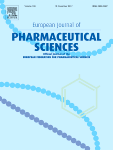Abstract
The success of viruses in the delivery of the viral genome to target cells relies on the evolutionary selection of protein-based domains able to hijack the intermolecular interactions through which cells respond to intra- and extracellular stimuli. In an effort to mimic viral infection capabilities during non-viral gene delivery, a modular recombinant protein named T-Rp3 was recently developed, containing a DNA binding domain, a dynein molecular motor interacting domain, and a TAT-derived transduction domain. Here, we analyzed at the microscopic level the mechanisms behind the cell internalization and intracellular trafficking of this highly efficient modular protein vector. We found that the protein has the ability to self-assemble in discrete protein nanoparticles resembling viral capsids, to bind and condense plasmid DNA (pDNA), and to interact with eukaryotic cell membranes. Confocal and single particle tracking assays performed on living HeLa cells revealed that the T-Rp3 nanoparticles promoted an impressive speed of cellular uptake and perinuclear accumulation. Finally, the protein demonstrated to be a versatile vector, delivering siRNA at efficiencies comparable to Lipofectamine™. These results demonstrate the high potential of recombinant modular proteins with merging biological functions to fulfill several requirements needed to obtain cost-effective non-viral vectors for gene-based therapies.

